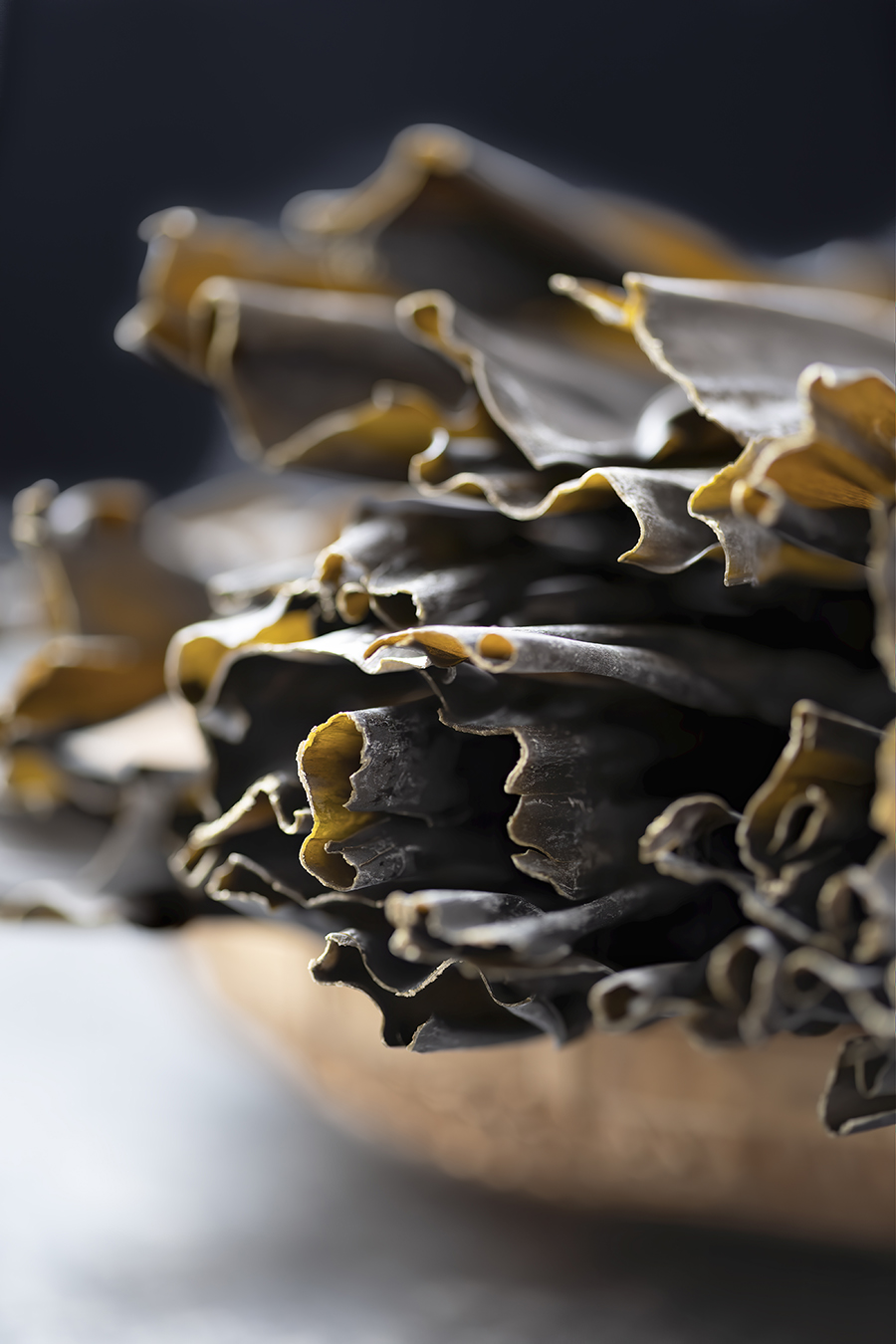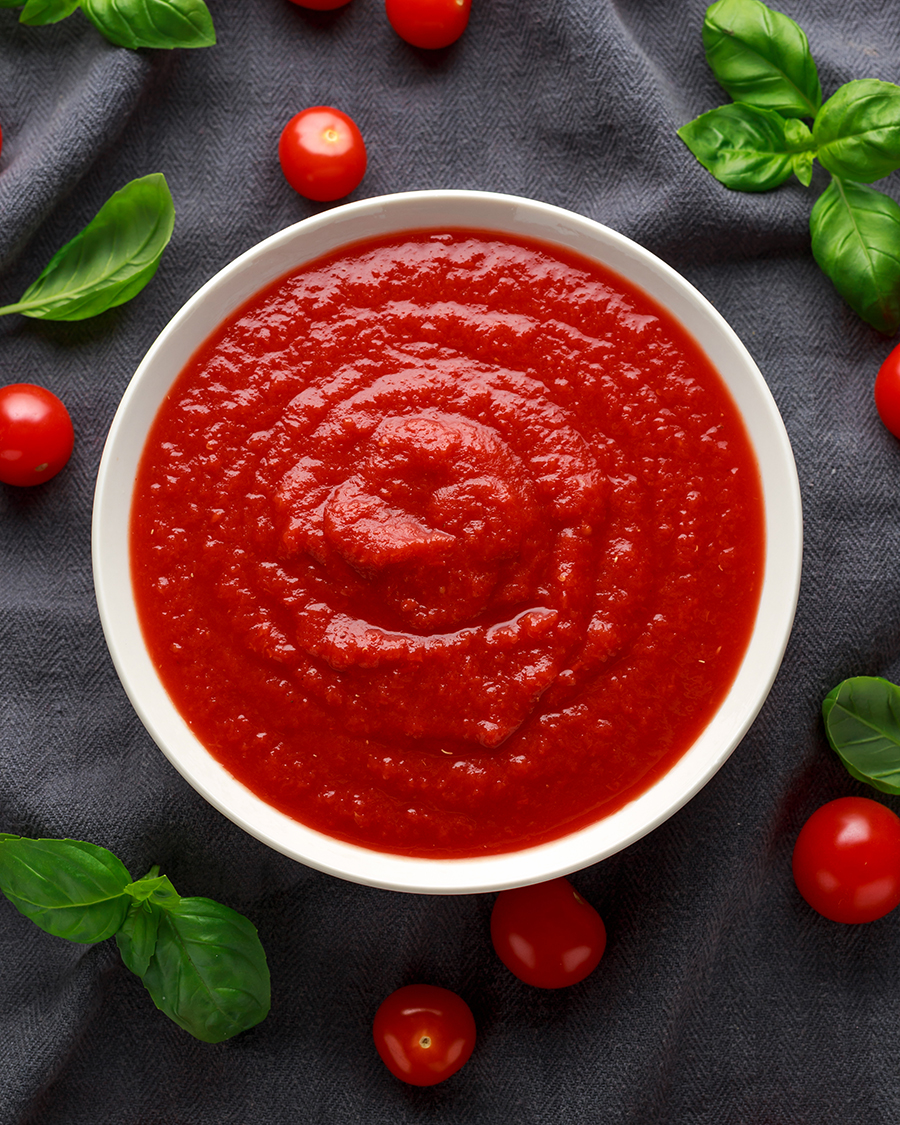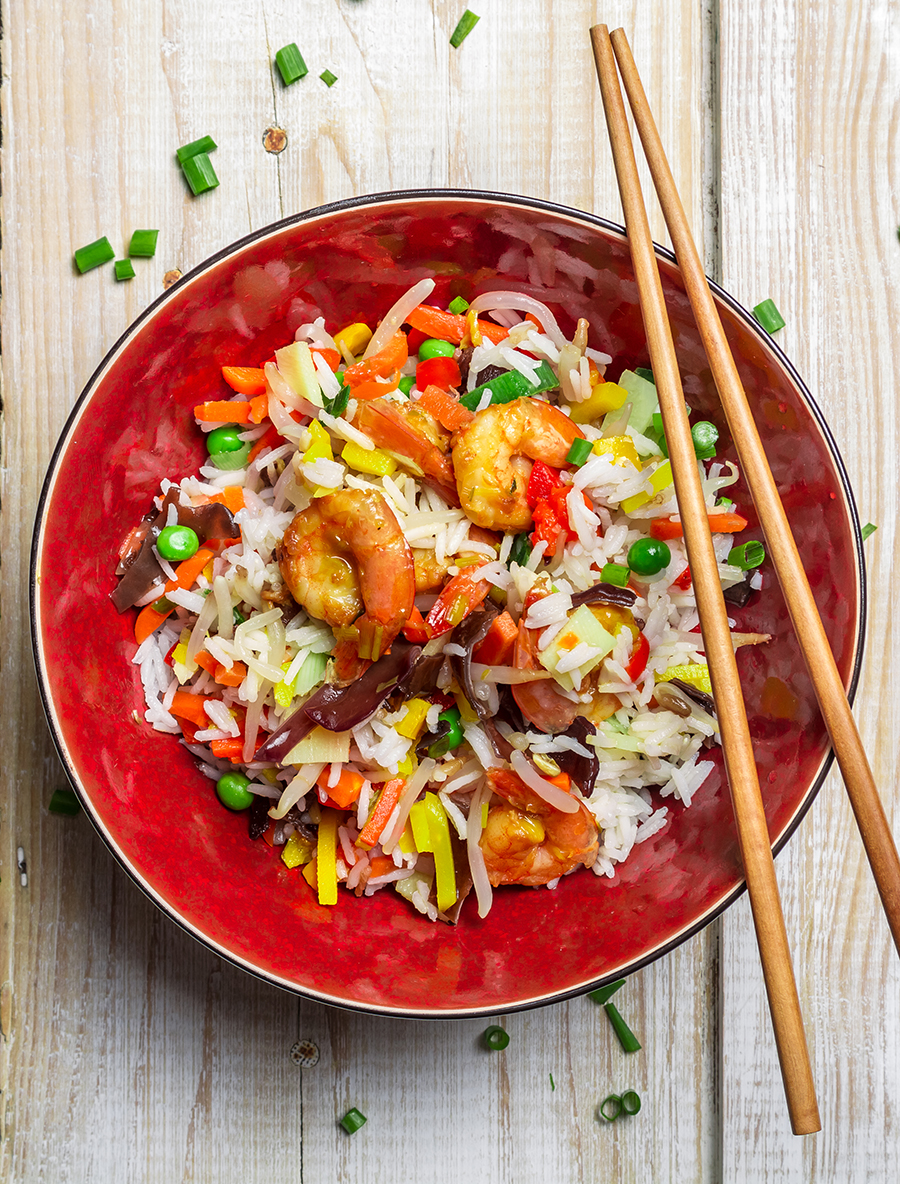The MSG Debate, Plus Two Umami-Rich Recipes for Tomato Sauce and Hong Kong-Style Fried Rice

Using MSG as a salt-like seasoning began in the early 20th century in Japan to add savouriness and richness to foods. Photo: luchezar/Getty Images
Nothing stirs up more controversy in the world of food and cooking than monosodium glutamates, popularly known as MSG.
For decades, MSG has been added to processed and packaged foods including chips, canned soups, and prepared dressings. This has prompted fierce debate among diners, cooks and scientists as to whether MSG is good or bad for you, and whether it’s allergy-symptom inducing.
But it’s the association of its use in Asian cuisine that has been villainized. The term “Chinese Restaurant Syndrome” (which has a rather murky and debatable history) was first coined in 1968 by Dr. Robert Ho Man Kwok. In a letter to the New England Journal of Medicine, the Kwok described a condition that included symptoms of headaches, sweating, and heart palpitations which occurred in people who had recently eaten food from a Chinese restaurant. It must be pointed out that there are questions whether Dr. Robert Ho Man Kwok was a real person and whether the letter was done in satire. ( This account claims the original was written under a pseudonym.)
Regardless of its origins (and dodgy claims), “Chinese Restaurant Syndrome” has been disproven. Research has found no clear proof that moderate use of MSG is a health hazard. In fact, the authority on the science of cooking, Harold Mcgee, has said: “Eating is a very complicated subject. Diet is a very complicated subject. In the case of MSG, the record is very clear. There is NO evidence that MSG causes the symptoms that were initially suggested as being part of the ‘Chinese Restaurant Syndrome.’”
Glutamate is an amino acid found in animal and vegetable proteins. It is naturally present in many foods we eat every day. That full, almost savoury flavour found in a fresh, off-the-vine, sun-ripened tomato, is due to high levels of glutamate. That salty, creamy richness from grated Parmigiano Reggiano comes from the concentrated glutamate that occurs during fermentation.
Using MSG as a salt-like seasoning began in early 20th century in Japan, when a researcher named Kikunae Ikeda isolated glutamic acid from kombu, a large seaweed used extensively in Japanese cuisine. He coined the term umami – the savouriness and richness in foods – which later became the fifth flavour, along with sour, salty, sweet and bitter. MSG is a harmless addition, when used in small amounts. Use it the way you’d handle salt: Small amounts give dishes a full and round flavour that salt cannot.

I’m not saying you should add MSG to all your food. However, fish or soy sauces can be used as an alternative, as both fermented sauces contain high levels of natural glutamates. For a quick soup, many cooks add a bouillon cube or spoonful of soup base to water for that full-flavoured richness that’s associated with MSG.
Being conscious of umami when seasoning your food will create major payoffs in terms of flavour. It’s surprising how much flavour can be added with just a dash of Three Crabs Fish Sauce into your homemade tomato sauce or what a couple of chopped up tinned anchovies – also full of umami – does to Caesar salad dressing.
Below are two versatile recipes for everyday dishes that make use of unorthodox umami-rich ingredients. Adding fish sauce to season a basic tomato or pasta sauce isn’t new: Colatura (garum made from fermented, salted anchovies) is a seasoning staple that dates back to Ancient Rome. It is also common practice to add a few pinches of powdered chicken flavoured soup base as seasoning to many dishes in Chinese cooking, including fried rice. It’s a great way to get that authentic restaurant flavour in your home cooking.
Quick and Easy Tomato Sauce
This base is terrific with not only pasta, but braising fish, meat and vegetables. Experimenting with different spices and seasonings will add layers of flavour and complexities.

Makes about 5 cups
Ingredients:
2 796 ml cans whole peeled tomatoes, preferably San Marzano
¼ cup (60 ml) extra virgin olive oil
6 cloves of garlic, peeled and sliced thin
1 stem of fresh basil
2 tablespoons (30 ml) fish sauce
Salt and pepper, to taste
Directions:
- Pour the cans of whole tomatoes into a large mixing bowl. Using your hands, crush the tomatoes, creating a pulpy, thick sauce.
- Heat a large pot over medium heat. Add the olive oil and the sliced garlic. Cook the garlic in the olive oil until it starts to brown lightly, about 2 to 3 minutes. Be careful not to brown the garlic too much as it will result in a more bitter sauce.
- Once the garlic is lightly browned, tip in the crushed tomatoes and the basil. Bring to a simmer, then reduce the heat to medium-low and cook for 15 to 20 minutes, or until it becomes thick and rich.
- Season with the fish sauce, salt and pepper to taste.
Here are some meal suggestions that use the hearty and rich sauce:
- Place individual portions of meaty white fish into the sauce, cover, and allow to gently simmer for 10 minutes.
- Add in browned pieces of chicken and simmer for 15 to 20 minutes.
- Add slow cook dried beans or hearty greens like kale or collards into the simmering sauce for a vegetarian option.
- The addition of 1 teaspoon of ground cumin and turmeric will give the sauce a curry-like aroma. Adding smoked paprika and chilli will turn it into a base for shakshuka.
Hong Kong Style Fried Rice
This classic recipe is ideal for repurposing leftovers. Adding in any proteins or vegetables into the fried rice will make it your own and unique. Sprinkling in a few dashes of fish sauce, soy sauce or fermented chilli sauce will boost the umami to create a flavourful quick meal.

Serves 4
Ingredients:
4 tablespoon of neutral flavoured oil, like canola
3 large eggs
2 cups (500 g) cooked day-old jasmine rice
½ cup (65 g) cooked leftover meat, like chicken or pork, diced
½ cup (65 g) small Matane Shrimp
1 cup (140 g) frozen green peas
2 tablespoons (30 g) powdered chicken broth base or mushroom flavoured broth base, like Knorr
1 teaspoon (5 g) sugar
Salt, to taste
Directions:
- Preheat a wok or large frying pan over high heat.
- Meanwhile, crack the eggs in a small bowl and whip with a fork until smooth.
- When the pan is hot, add the oil. It should be smoking. If not, wait until the oil starts smoking. Add the whipped egg. Do not touch for 5 seconds, as it should puff up very quickly. Very gently stir the egg once.
- When the egg is about half cooked, add in the day-old rice. Using a spoon, stir the rice and egg together. Allow the rice mixture to sit in the pan, without stirring, for 20 seconds. Flip and stir the rice once, while using the back of the spoon to press out any large clumps of rice. Repeat this process, cooking for 20 seconds, then flipping and stirring, until the rice is all separated and warmed through.
- Add in the leftover diced meat, matane shrimp and peas. Continue cooking until the ingredients are warmed through.
- Stir in the powdered chicken or mushroom broth base, sugar and salt to taste. Serve hot.

Jonathan Cheung is the chef and owner of Appetite for Books, a cookbook store in Montreal that also hosts cooking classes. An expert in his field, Jonathan has gained experience in a variety of international cuisines, appearing on TV shows including Iron Chef Canada, Anthony Bourdain: The Layover, Food Network’s Eat St. and BT Montreal. He is the co-author of Montreal Cooks.
A version of this story was originally published in Oct. 2023.
RELATED: